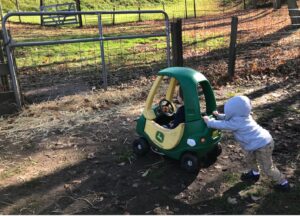 Interests and positions. We hear these terms frequently in negotiation and dispute resolution circles, but what do they really mean? And why is it important to understand the difference?
Interests and positions. We hear these terms frequently in negotiation and dispute resolution circles, but what do they really mean? And why is it important to understand the difference?
In the July 18, 2022, EDR blog “Conflict just is. Let’s make it productive,” Environmental Dispute Resolution (EDR) Program Director Danya Rumore includes several important mindset shifts that can improve how we perceive and respond to conflict. One powerful shift she mentions is learning to focus on interests, rather than positions.
A focus on positions can lead to dead ends
For many of us in a conflict situation, our first tendency is to focus on our “position,” or a particular solution or strategy that we think will satisfy us. We may find ourselves digging in on this position, even if it isn’t the only or best way to meet our core needs and concerns. If our counterparts have a position that is incompatible with ours, we may quickly reach an impasse. We either fail to reach agreement, or we try to compromise. Either way, one or more parties may be disappointed with the outcome.
As an example, consider a situation where two young friends are arguing over a piece of candy. Each child has taken the position that they want that entire candy for themselves. Unless one or both children relent, there is no path forward and no mutually satisfying outcome. Either one child gets the entire candy and leaves none for their unhappy friend, or they split the candy (a compromise) and both children are unhappy because they wanted the full-size piece. Position-based negotiation can be an unhappy dead end.
A focus on “interests” (needs) can help generate better outcomes
When we avoid digging into positions and instead actively engage with one another—to discover together what underlying needs must be addressed—we learn to focus on interests. Fisher, Ury, and Patton define interests in their book Getting to Yes as “needs, desires, concerns, and fears.” By exploring interests, we make it possible to build mutual understanding, creatively solve problems, and generate mutually satisfying outcomes.
Get notified when new articles are posted to the EDR blog. Sign up for our email list »
If the young friends in the candy argument had paused for a moment to ask one another why they wanted the candy, or why the candy was important, they may have uncovered deeper motivations at play. Perhaps one child did not want the candy per se but was simply hungry. Or perhaps the struggle over the piece of candy was about something else, such as one child feeling unfairly treated, or one or both kids wanting attention. When we uncover the underlying needs, concerns, and fears that fuel our positions, it opens the door to explore other options to co-create mutual gains solutions. For example, if one or both kids realize they are hungry, they may decide that a more substantive snack would be the most satisfying solution for their needs. If there is a deeper need for recognition, attention or fairness, each child taking a moment to explain their feelings could strengthen the friendship, whereas splitting the candy (or mom coming in and taking away the candy) is likely to have the opposite effect. Even in the situation that both kids realize they have a sweet tooth, identifying this desire might lead them to explore whether there are other sweets they can find or make.
Many of us have been raised to take a position and hold it
Does it seem far-fetched to picture children engaging in interest-based conflict resolution? Maybe to some. I’ve included this example here on purpose. There are reasons why position-based approaches are so common, and explanations for why they are often our first tendency: they are what we grew up with and what was often modeled for us. We have been raised to think that there are limited resources available, and that someone always loses in a conflict situation. Sometimes yes, someone loses. Still, does this have to be such a widespread norm that we don’t even bother to look at things differently?
As a parent, I understand how hard it can be to navigate childhood conflicts in a productive, skill-building way. One small step I have taken to model interest-based approaches is to ask my preschooler “why?” when he digs in on a position. While he may not be old enough to interpret or articulate his deeper motivations, I’m hoping that this approach gets him in the habit of pausing, reflecting, and considering his needs.
Most of us have not been trained or encouraged to think about our own interests and to seek understanding of the interests of others. We can become so focused on positions that we forget to look any deeper. Imagine what the conflict landscape could look like if we all made it a priority to understand one another’s needs, desires, concerns, and fears. This shift in mindset can open the door for satisfying and sustainable solutions that work for all parties and, as Danya wrote in our last EDR blog, help make conflict productive rather than destructive.
Shifting from a focus on positions to a focus on interests is easy in theory and difficult in practice (in large part because we aren’t taught to think this way from an early age). Interests can take many forms, are different for different parties, and can be difficult to identify. Would you like to learn more? The EDR program offers trainings on related topics and also has a tools and resources webpage with an introductory video and handout explaining interests and positions. We invite you to check out these resources and contact us (edrprogram@law.utah.edu) if you have suggestions.
 Emily Gaines-Crockett is the program manager for the Wallace Stegner Center’s Environmental Dispute Resolution program at the University of Utah.
Emily Gaines-Crockett is the program manager for the Wallace Stegner Center’s Environmental Dispute Resolution program at the University of Utah.
